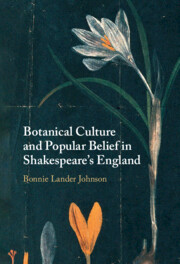Conclusion
The Mulberry Tree
Published online by Cambridge University Press: 02 January 2025
Summary
Shortly after his death in 1616, Shakespeare’s reputation began to draw tourists to his home in Stratford-upon-Avon. It wasn’t long before interest in Shakespeare became focused on the enormous mulberry tree that grew in his garden at New Place. Peculiar to Shakespeare’s work was a knowledge of the deeply human interest in the ornaments of creation, whose names and qualities are some of the earliest forms of knowledge we acquire as children and whose seasonal changes, whose beauty and decay, continue to shape our adult imagination. After his death, Shakespeare’s own biography became associated with the tree that grew in his garden: the tree and the man who planted it entered the annuls of common childhood knowledge. The first stirring of what would develop in the nineteenth century into a full-blown cult of Englishness began to form in those early seventeenth-century associations between the writer, his town, his plants and the nostalgia – at once nationalist and deeply personal – of the people who experienced in his work a glimpse of the fading realm that hovers always behind us: the homely, the simple, the common.
- Type
- Chapter
- Information
- Botanical Culture and Popular Belief in Shakespeare's England , pp. 182 - 184Publisher: Cambridge University PressPrint publication year: 2025

